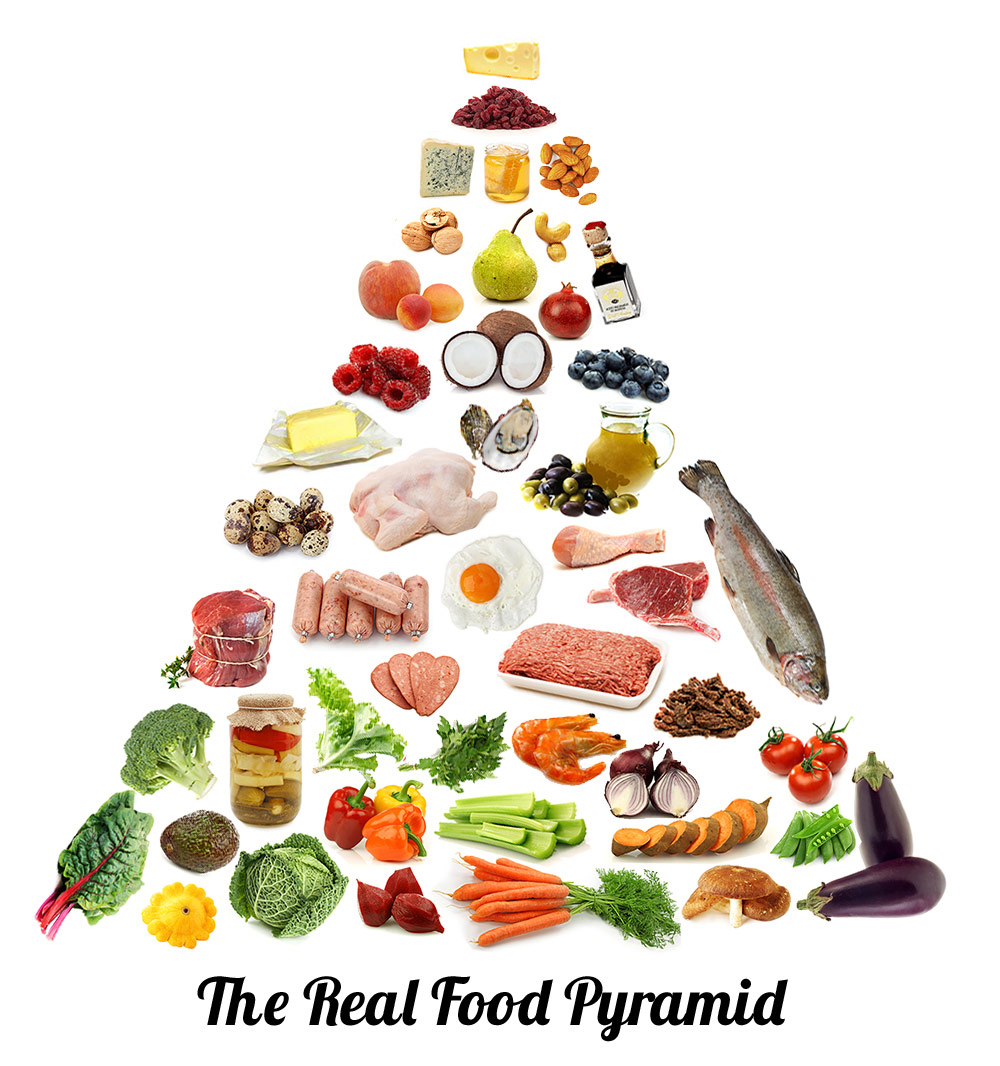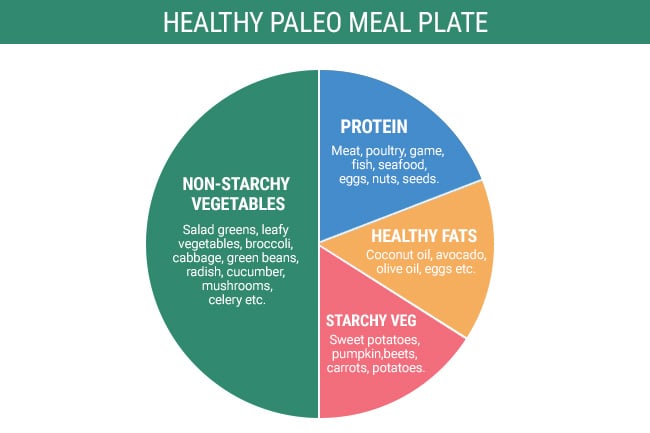What Is The Paleo Diet? A Beginner’s Guide
The Paleo diet draws its core principles from our hunter-gatherer ancestors and combines this knowledge with modern scientific research into nutrition and a healthy lifestyle. In this post, I go over the basics and why you might want to try it.

The paleo diet has gained a huge following in the last 10 years, however, it is still often scrutinised, misrepresented, and often misunderstood. The thing about it is that it’s not really a new diet. The lifestyle – yes, it’s much more than a diet – has been around for many years.
The original paleo movement had a niche following until a couple of books – The Paleo Solution by biochemist Robb Wolf and The Primal Blueprint by a former athlete Mark Sisson – hit the best-sellers list and spread the message into the mainstream.
There was also the original book The Paleo Diet by Dr.Loren Cordain, which coined the name Paleo. Then came the dedicated forums, blogs (including my blog which was previously called Eat Drink Paleo) and Facebook pages all over the United States and around the world.
Paleo Diet Basics
When we look at our ancestors or even go back just 10,000 years ago, a lot of modern diseases and health conditions didn’t exist or were very rare. The obesity and diabetes rates have really spiked in the past 50-100 years and it seems that we are sicker now than ever before.
Our increasing health issues seem to coincide with our dietary and lifestyle changes and specifically the introduction and commercialisation of refined, packaged foods and sugar, false dietary guidelines (e.g. demonising fat), modern mass-scale farming and agriculture practices, chronic stress and a desk-bound lifestyle.
Following the diet and lifestyle helps to achieve more optimal health because it teaches us those core principles from our ancestors who ate whole, unprocessed foods, moved more, slept better and stressed less (or in a different way).
It’s not about re-enacting the Palaeolithic era. In fact, most people in the Paleo community hate the term ‘Caveman diet’. Instead, it’s about learning from the past and applying the latest research and insights to understand what makes us thrive. It is concerned with how different foods affect things like our metabolism, digestion, insulin sensitivity, and systemic inflammation.

As such, the paleo diet focuses on eating whole, unprocessed foods like grass-fed meat, free-range poultry, wild fish, vegetables (including root vegetables,) fruit, berries, nuts and seeds. The diet avoids grains (especially refined), legumes, refined sugars and dairy. It helps to control insulin sensitivity, repair gut health, increase nutrient absorption and reduce negative inflammatory effects they can cause. Read more about the paleo diet benefits here.
Many people start with this basic framework but after a period of elimination, they might incorporate some dairy, rice or legumes back into their diet, depending on how they react to them.
Check out what you can and can’t have on a paleo diet here.
Paleo Diet Is Not Just Meat
It’s not all meat, meat and more meat. You will consume as many vegetables in a day as a vegetarian (if not more) and you will find that a lot of the recipes on my site are vegetarian-friendly. In addition, the quality of meat is more important than quantity. I wrote a detailed post on the topic of meat and the paleo diet here.

Many people also consume healthy dairy like full-fat natural yoghurt, certain cheeses and butter. Plus, fermented dairy products have many health benefits.
Paleo Is Not Always Low-Carb
Even though this diet is lower in carbohydrates than a regular diet (by excluding grains and refined sugars), eliminating carbohydrates is not the ultimate goal. The problem with the modern diet is the excessive amount of carbohydrates, especially sugar. It leads to a whole bunch of health issues related to insulin resistance, digestive problems and inflammation.

While eating paleo, I still consume plenty of carbs from vegetables, fruits, nuts and dairy. I would say that the average daily consumption of carbohydrates on the paleo diet falls somewhere between 80-100 grams per day. The lower-carb or keto version is under 50 grams per day (that’s net carbohydrates without the fibre) and the higher-carb version favoured by active, lean individuals or pregnant women is between 100-150 grams.
Carbohydrate intake is an individual thing and you have to tinker around with the ratios until you find the perfect numbers for your needs. If you want to lose weight fast or gain the mental clarity of superheroes, perhaps the keto version is what you need. Women tend to do better with a few more carbohydrates for their hormonal balance.
Paleo Is About Healthy Fats
Fat is the most unfairly demonized victim of modern nutritional science. As far back as we can remember, we have been told to banish it from our diet. “Eating fat makes you fat!” goes the logic.
I remember going through a massive low-fat stage in my early twenties. I only ate fat-reduced cheese that doesn’t melt, low-fat yoghurt with copious amounts of added sugar, and skim milk that tastes like water. Looking back, those were not healthy foods!
The truth is, well, different. Very different. Obesity rates have been steadily rising since the beginning of the low-fat craze in the 80s – because sugar, junk food, and a sedentary lifestyle are the real culprits.

Fats are a foundational macronutrient in our diet and definitely shouldn’t be condemned. Some fats offer us more health benefits than others. However, dietary fat [fat found in food] in general plays a big role in our overall health, including satisfying our appetite – which in fact can assist with weight maintenance.
The Paleo diet includes plenty of healthy fats like olive oil, macadamia oil, coconut oil, coconut milk, avocados, butter, ghee (clarified butter), oily fish, grass-fed meat, nuts and seeds.
The diet promotes the consumption of anti-inflammatory omega-3 fatty acids found in oily fish, seafood, fish oil, flaxseeds, pasture-fed chicken eggs, and grass-fed meat. It also helps to decrease our intake of the more pro-inflammatory Omega-6 fatty acids found in refined, seed-derived and manmade oils, grain-fed meat, and some nuts and seeds when consumed in excess.
A healthier balance of these essential fatty acids helps to lower systemic inflammation, which is believed to be the culprit of many health issues.
You can learn more about the types of fats and their role in nutrition in my free programs
Principles Of The Paleo Lifestyle
When I think about what defines the paleo lifestyle, or healthy lifestyle in general, I see the following core factors which are tightly linked together:
- Stress management
- Good sleep
- Regular movement
- Avoidance of toxins

One aim of living the paleo lifestyle is about minimising stress. While a small amount of stress is good for us, the more prolonged, chronic mental and physical stress leads to increased levels of cortisol and causes havoc in our bodies. It can affect our hormones, weight, immunity, blood pressure, memory, mood, fertility and sex drive.
One way we can control our cortisol level and the effects it has on insulin, appetite and productivity, is by getting enough quality sleep. According to the 2012 Sealy Sleep Census, 96% of 13,089 polled respondents from throughout Australia said they wake up tired each morning, with a mere four per cent saying they feel refreshed. 38% have reported falling asleep at work or during meetings.
The Paleo lifestyle prescribes 8 hours of sleep in a completely dark room and minimises stimulants and distractions before bed and during sleep. These include light sources, noise, blue light and screens before bed).
Obviously, this is not always achievable, but it makes a big difference to your health and well-being. In my opinion, prioritising sleep should be just as important as healthy eating and exercise. Learn my top tips for good night sleep.
It also prescribes regular movement (ideally outdoors) such as walking, hiking, weight lifting and high intensity, interval training.
Daily exposure to sunshine (Vitamin D), in-person socialising and learning new things to stimulate our brains are also promoted. Here are my favourite ways to stay active.
The last pillar is avoiding toxins such as environmental pollutants and chemicals found in our skincare and cleaning products, for example. Many of these toxins are linked to escalating health issues and hormonal imbalances, which is why the lifestyle promotes natural (often homemade) beauty and cleaning products, air purifiers, essential oils and so on. My natural skincare tips here.
Useful Paleo Resources & Articles
- Paleo diet food list
- Paleo diet benefits
- Most common paleo questions I get asked all the time
- Paleo diet rules you shouldn’t be afraid to break
- My free paleo plan (4-Week Reset + 4-Week Reintroductions)
In Summary
One final and the most important points I want to make is that there is no one-size-fits-all Paleo diet. Paleo is just a label given to a dietary framework, which can and should be tailored to your individual needs, goals, body type and sensitivities.
It’s about how you feel when you include or exclude certain foods and not about being strict all the time or dogmatic. I have written about my human approach to paleo here. There are many variations of the paleo diet, such as the autoimmune protocol, Whole30, primal, low-carb and keto, pegan, added dairy, 80/20, and so on.
I always recommend that people learn as much as they can about the whys and hows of paleo nutrition and lifestyle (I go in-depth on these topics in my program) before they try it. Give it a go for 30 days (it’s an excellent reset diet!) and then listen to your body to see which foods you can add back in. Always check in with your doctor and do some blood tests before and after to measure your health markers.
Make the paleo diet work for you!


